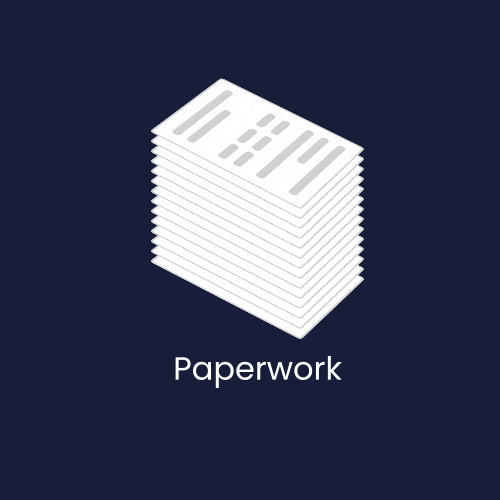Global economies rely heavily on the food industry to supply businesses and consumers with necessities. However, the perishable nature of food, stringent regulations, and the requirement for on-time delivery make the logistics involved in the food delivery logistics industry especially difficult. These logistical challenges create an environment where efficiency, compliance, and responsiveness are critical for operational success. By adopting nuVizz advanced platforms, food companies can streamline their processes, meet customer expectations, and effectively tackle these challenges. Let’s explore how nuVizz empowers food logistics to overcome these challenges in food industry logistics.
Key Challenges in Food Industry Logistics
There are many logistical challenges in the food industry that make efficient distribution and operational management challenging. Examining some of the major issues facing the food business in further detail:
⦁ Delivery Execution:
One of the main issues with food logistics is executing deliveries on time, especially when dealing with perishable items that have limited shelf lives. Customer unhappiness, increased return rates, and product degradation might result from delayed deliveries. Additionally, specific handling and rigorous schedule adherence are needed for temperature-sensitive products including dairy, meats, and produce. It takes careful preparation and quick reaction times in a fast-paced setting to make sure that commodities reach their destination while remaining fresh.
⦁ Operation Planning:
Managing the complex logistics of the food supply chain requires effective operation planning. Managing several delivery sites, allocating the appropriate fleet resources to handle different kinds of food items, and organizing warehouse stocking are all part of this. Bottlenecks, ineffective routing, and higher operating expenses might be encountered by food industries in the absence of optimized processes. Furthermore, a poorly planned supply chain can cause delays and losses that affect profitability. Maintaining efficient and economical deliveries requires precise forecasting and resource allocation.
⦁ Delivery Planning:
Food businesses must develop strong delivery planning schedules, particularly during times of high demand. In the food industry, peak seasons, shifting consumer preferences, and last-minute order modifications are typical. This calls for dynamic scheduling features that can take these factors into account while maintaining freshness and delivery window requirements. To avoid delays and increase delivery efficiency, it is crucial to plan the quickest, most effective delivery routes while also accounting for driver availability and vehicle capacity.
⦁ Regulatory & Business Risk:
Another level of complication is added by the stringent safety, hygienic, and transportation rules that apply to the food business. Reputational harm, product recalls, and legal repercussions may arise from breaking these rules. Furthermore, it is difficult for food companies to sustain steady profitability due to business risks such shifting fuel prices, labor shortages, and shifting consumer expectations. Effectively managing commercial and regulatory risk is essential to maintaining long-term performance and winning over customers.
How nuVizz Platform Helps Overcome These Challenges
To address these logistical challenges, the nuVizz platform offers a suite of advanced tools that provide comprehensive support for food companies. Here’s how nuVizz can help food Industries tackle these hurdles:
⦁ Strategic Planning:
With the help of the nuVizz platform, food industries can successfully manage delivery routes, predict shifts in demand, and allocate resources with its sophisticated strategic planning features. Food businesses can modify delivery timetables and routes by utilizing data-driven insights, taking into account current traffic patterns, weather conditions, and other elements that affect delivery times. By using this strategic planning, food firms may stay competitive and satisfy customer expectations by being better equipped to manage last-minute order modifications and maintain on-time deliveries.
⦁ Automated Routing & Optimization:
Food businesses can automatically identify the most effective routes for every delivery using nuVizz’s Automated Routing & Optimization tool. The program finds the best routes, uses less fuel, and cuts down on travel time by utilizing AI & ML algorithms. In order to ensure that food supplies arrive at their location as soon as feasible, automated routing also takes delivery timetables, driver shifts, and vehicle capacity into consideration. In addition to reducing expenses, this automation also reduces human mistake, resulting in a smooth delivery process that benefits the client and the company.
⦁ Real-Time Tracking:
Food businesses can see the precise location of each delivery vehicle using nuVizz’s Real-Time Tracking. Businesses may monitor delivery status, promptly address delays, and give consumers precise ETAs with the use of this real-time vehicle tracking knowledge. Transparency is another benefit of tracking, which enables food businesses to handle unforeseen problems like traffic or truck breakdowns instantly. Improved visibility improves the whole customer experience by ensuring that food arrives fresh and bolstering customer trust.
⦁ Delivery Execution:
Order placement through Final/Last mile delivery confirmation are all streamlined by nuVizz’s Delivery Execution function. By integrating easily the platform enables businesses to efficiently manage and track deliveries. By ensuring that drivers receive correct information, such as delivery instructions and recipient details, it lowers the possibility of mistakes. Food businesses can also offer a dependable service that satisfies strict industry standards by executing deliveries effectively, guaranteeing that perishable goods are delivered on schedule.
⦁ Analytics & Reporting:
Food firms can improve their logistics operations by using nuVizz’s Analytics & Reporting, which offers useful information on customer satisfaction, delivery performance, and overall efficiency. Businesses can discover opportunities for improvement and comprehend operational strengths with the aid of the platform’s comprehensive reports. Key performance indicators (KPIs) like delivery times, route efficiency, and cost per delivery can be evaluated by decision-makers with the use of analytics. By examining these food businesses can ensure a competitive edge by implementing data-driven changes to enhance procedures and adjust to shifting market conditions.
Conclusion
In the fast-evolving world of food delivery logistics, overcoming logistical and regulatory challenges is crucial to meeting customer demands and maintaining profitability. nuVizz platform offers a comprehensive solution to the challenges in food industry logistics by combining strategic planning, real-time tracking, automated routing, and insightful analytics. By leveraging these advanced tools, food companies can address key operational pain points, reduce delivery times, and provide an exceptional customer experience. With nuVizz, food businesses are equipped to tackle the future with confidence, ensuring they remain competitive and compliant in a challenging industry.

